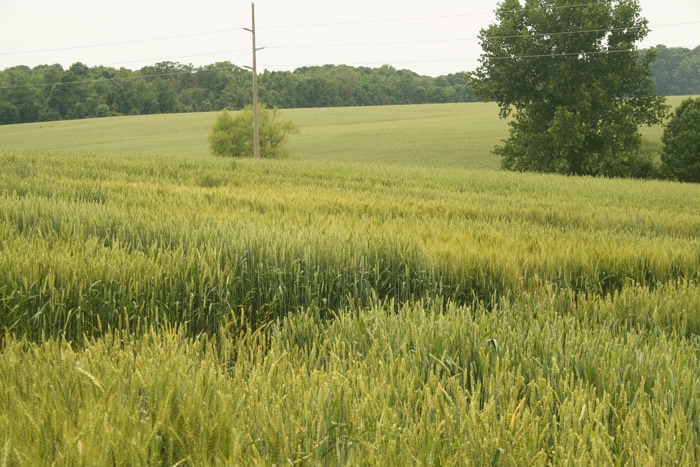June 6, 2013

Wheat harvest is getting under way in the Upper Southeast and it appears the Carolinas and Virginia may be headed toward a record crop in terms of production, which bucks the national trend for lower production.
In North Carolina, where some say close to a million acres of wheat was planted last fall, production is projected to be up by more than 27 percent to more than 54 million bushels.
Average yield is expected to be slightly higher in all three states than was recorded last year.
In Virginia, The Virginia Department of Agriculture and Consumer Services says wheat production is expected to be near 17 million bushels, up 7-8 percent last year.
Producers in the Commonwealth are expected to harvest 270,000 acres of wheat that will yield an average of 62 bushels per acre. As of early June, the majority of the wheat crop had survived a cold, wet spring and appears to be in good condition.
In South Carolina estimates on wheat acreage vary greatly, but few doubt there is a lot more wheat in the Palmetto state than last year. Because of late planting and a record cold March, some of the wheat is not expected to produce high yields, but with as much as 250,000 acres planted, total production could be up significantly from 2012.
Nationally, U.S. winter wheat production is forecast to be down 10 percent from 2012. That production is forecast at 1.49 billion bushels. As of May 1, the U.S. yield is forecast at 45.4 bushels per acre, down 1.8 bushels from 2012.
Want access to the very latest in agriculture news each day? Subscribe to Southeast Farm Press Daily.
Cold, wet weather across the Upper Southeast in much of April and May has slowed planting of most crops, especially corn. What impact the delayed planting will have on grower’s ability to harvest wheat on a timely schedule remains to be seen.
Kudzu bugs have been reported from Virginia to South Carolina in wheat and there is concern this may mean an increase in populations once growers begin cutting wheat.
Typically in Georgia and South Carolina, where most of the kudzu bug damage on crops has been reported, July and August have been the danger months, but heavy infestations in wheat and a compressed harvest time based on delayed planting of other crops may be a problem.
All in all, the wheat crop looks outstanding, says North Carolina Small Grains Growers Association head Dan Weathington. “We’ve had a few problems this year, but I will be surprised if we don’t end up having one of the best wheat crops in recent history,” he said.
More from Southeast Farm Press
Deadline is June 10 for Southeast grain scholarships
Thrips making run at North Carolina cotton
Native warm-season grasses weather drought, provide many other benefits
Applicants sought for ASA/DuPont Young Leader program
Hog profits return, but delayed crop planting keeps producers wary
About the Author(s)
You May Also Like






